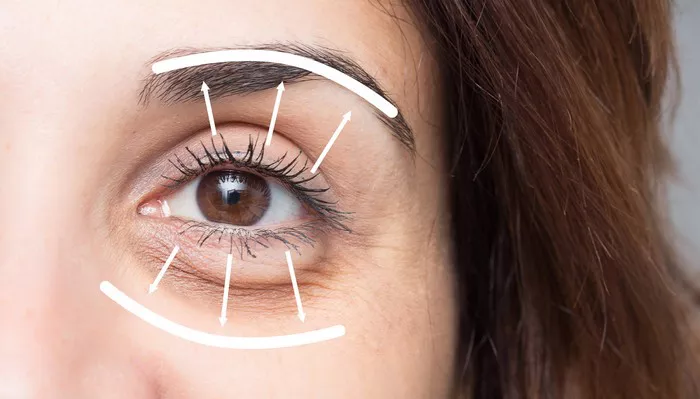Eyelid surgery, also known as blepharoplasty, is a surgical procedure that addresses issues such as sagging eyelids, excess skin, and fat deposits around the eyes. It is a popular cosmetic procedure that can rejuvenate the appearance of the eyes, making them appear more youthful and refreshed. One common concern for individuals considering eyelid surgery is the recovery process. In this article, we will explore the duration and key aspects of recovery from eyelid surgery.
Understanding Eyelid Surgery
Eyelid surgery can be performed on the upper eyelids, lower eyelids, or both, depending on the individual’s specific needs and concerns. The procedure involves making incisions along the natural creases of the eyelids to remove excess skin, redistribute or remove fat deposits, and tighten the underlying muscles and tissues. The incisions are carefully closed to minimize scarring.
Eyelid surgery can address various concerns, including:
Drooping upper eyelids: Sagging or drooping upper eyelids that may impair vision or create a tired appearance.
Puffy or baggy lower eyelids: Excess fat deposits or loose skin causing bags under the eyes.
Wrinkles and fine lines: Fine lines and wrinkles around the eyes, commonly known as crow’s feet.
The surgery is typically performed under local anesthesia with sedation or general anesthesia, depending on the extent of the procedure and the patient’s preferences.
Immediate Recovery Period
After eyelid surgery, patients are typically monitored for a short period in a recovery area before being allowed to go home. It is important to arrange for someone to drive you home and stay with you during the initial phase of recovery. During this time, your eyes may be covered with ointment and a bandage to protect the incision sites.
It is normal to experience some discomfort, swelling, and bruising immediately after the surgery. Your surgeon may prescribe pain medication to help manage any discomfort. Applying cold compresses and keeping your head elevated can also help reduce swelling and promote healing.
The First Week of Recovery
The first week following eyelid surgery is a critical phase in the recovery process. Here’s what you can expect during this time:
Swelling and Bruising: Swelling and bruising around the eyes are common after eyelid surgery. Swelling typically peaks within the first 48 hours and gradually subsides over the following days and weeks. Bruising may also be present, but it will gradually fade over time.
Stitches Removal: If non-dissolvable stitches are used, they will be removed within the first week following the surgery. Your surgeon will evaluate your progress and determine the appropriate time for stitch removal.
Sensitivity: Your eyelids may be sensitive to light, wind, and other irritants during the initial recovery period. Wearing sunglasses and avoiding harsh environmental conditions can help protect your eyes and enhance comfort.
Activity Restrictions: It is important to avoid strenuous activities, heavy lifting, and bending over during the first week of recovery. These activities can increase blood flow to the eyes and potentially compromise healing.
Eyecare: Your surgeon will provide specific instructions on how to care for your eyes during the recovery period. This may include using prescribed eye drops or ointments to keep the eyes lubricated and clean.
Continued Recovery and Final Results
As you progress through the second week and beyond, you will likely notice improvements in swelling, bruising, and overall comfort. However, it is important to remember that the complete healing process and final results can take several weeks or months.
Here are some key points to consider during the continued recovery period:
Returning to Work: Many patients are able to return to work within 7 to 10 days, although this may vary depending on the individual and the nature of their occupation. If your job involves strenuous activities or requires prolonged periods of screen time, your surgeon may recommend additional time off.
Makeup and Contact Lenses: Your surgeon will provide specific guidelines on when it is safe to resume wearing makeup and contact lenses. It is important to follow these instructions to avoid potential complications.
Sun Protection: Protecting your eyes from the sun is crucial during the recovery period. Wearing sunglasses with UV protection and using sunscreen around the eyes will help prevent sun damage and facilitate healing.
Scarring: Incisions made during eyelid surgery are typically placed along natural creases or within the lower lash line, resulting in minimal visible scarring. Over time, the scars will fade and become less noticeable.
Final Results: It is important to have realistic expectations about the outcome of eyelid surgery. While noticeable improvements will be visible shortly after surgery, it may take several months for the final results to fully manifest as the swelling subsides and the tissues settle into their new position.
Consultation with a Plastic Surgeon
If you are considering eyelid surgery, it is crucial to consult with a qualified and experienced plastic surgeon. During the consultation, your surgeon will evaluate your specific concerns, discuss the expected recovery process, and provide detailed instructions to ensure a smooth and successful recovery. They will address any questions or concerns you may have and guide you through the entire process, from pre-operative preparation to post-operative care.
In conclusion, the recovery period for eyelid surgery typically involves immediate post-operative care, followed by a week of initial recovery and continued healing over several weeks. It is important to follow your surgeon’s instructions, take prescribed medications, and attend follow-up appointments to optimize your recovery and achieve the best possible results. With patience and proper care, you can expect a smoother, more youthful appearance around your eyes.

